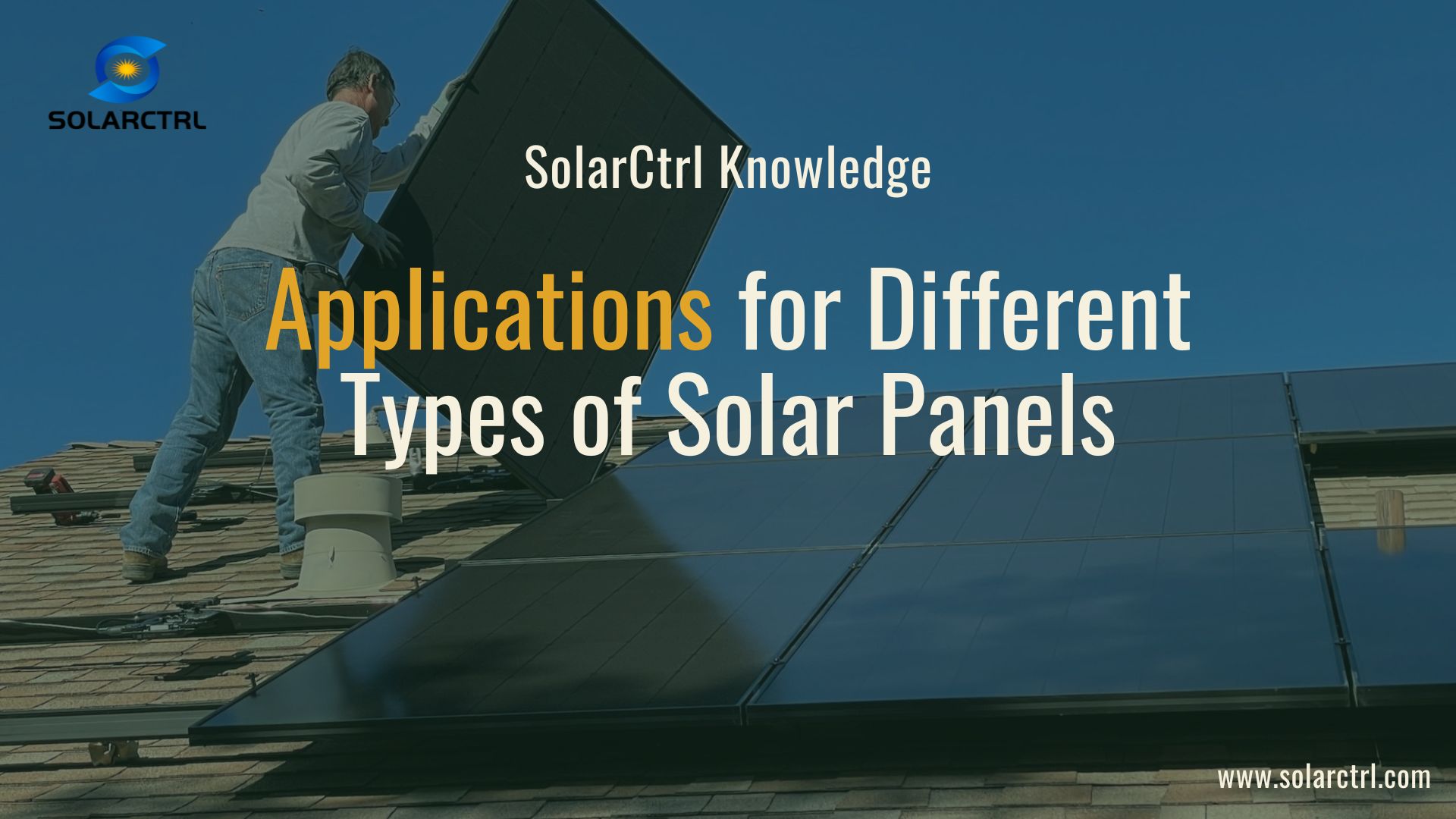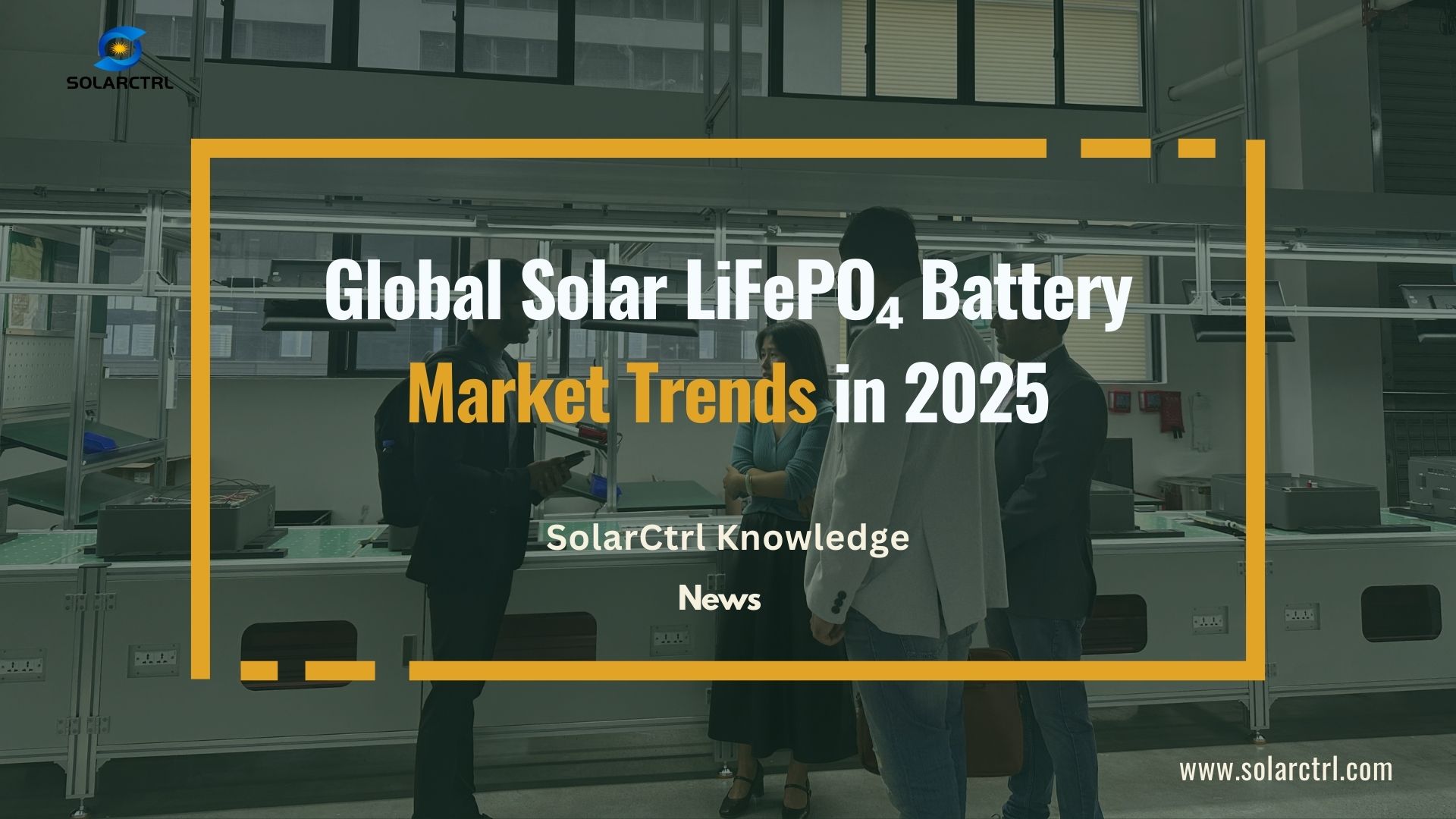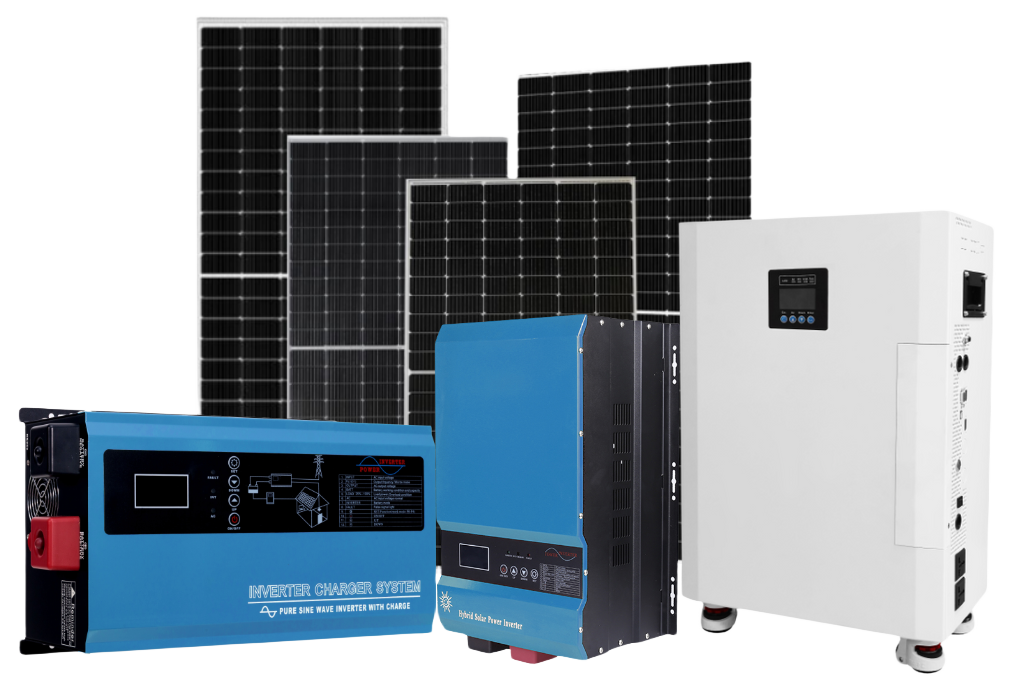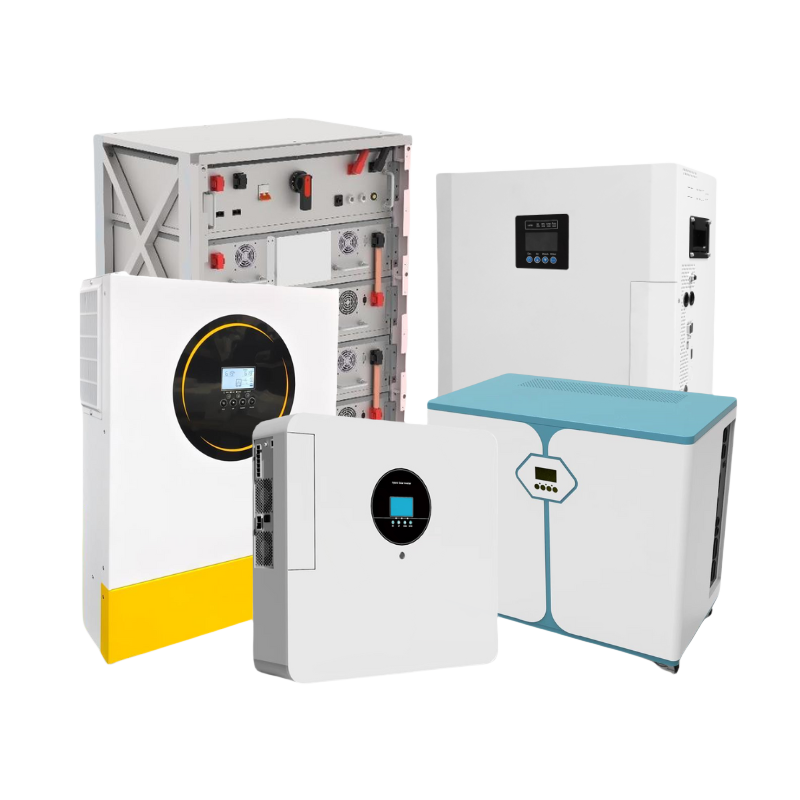Introduction
The evolution of solar technology has led to the development of various types of solar panels, each with unique characteristics and suitability for different applications. From residential rooftops to sprawling commercial complexes, the choice of solar panels significantly impacts the efficiency, cost, and overall success of solar energy projects.
This article delves into the main types of solar panels – Monocrystalline, Polycrystalline, and Thin-Film – and explores their optimal applications across diverse scenarios, guiding you through the selection process to ensure your solar energy solution is both efficient and effective.
Part 1: The Main Types of Solar Panels
1.1 Monocrystalline Solar Panels
Monocrystalline solar panels represent the pinnacle of solar panel technology. These panels are crafted from pure silicon, making them a premium choice in the solar market.
The manufacturing process, known as the Czochralski method, involves growing a single silicon crystal in a molten silicon vat. The crystal is then meticulously extracted and cooled to form a solid ingot. This ingot is sliced into thin wafers, which are the building blocks of each solar cell. Assembled into panels, these cells have a distinctive appearance, often black due to the pure silicon content, with their unique square shape having clipped corners. This design choice creates small spaces between the cells, offering a sleek look.
Notably, Monocrystalline solar panels can achieve over 20% efficiency, making them ideal for high-performance requirements. Furthermore, their durability is exceptional, with a lifespan typically ranging between 25 and 40 years, ensuring long-term reliability.
While their production costs are higher, monocrystalline panels offer a sophisticated and efficient solar energy solution, customizable in both frames and back sheets.

1.2 Polycrystalline Solar Panels
Polycrystalline solar panels are increasingly popular due to their balance of efficiency and affordability. These panels are created using a modern process that utilizes silicon fragments instead of a single crystal. During manufacturing, these fragments are melted together, cooled, and then set to form a solid mass. This mass is later cut into wafers to create the solar cells.
Distinguished by their blue hue when exposed to sunlight, a result of the fragmented silicon composition, polycrystalline panels offer a visually different option from the pure silicon black of monocrystalline panels.
With an efficiency range of 13%-16% and a life span of 20 to 35 years, polycrystalline solar panels are designed with square-shaped cells closely packed together, often with silver frames, combining cost-effectiveness with visual appeal.

1.3 Thin-Film Solar Panels
Thin-film solar panels represent the latest innovation in solar technology, known for their remarkable flexibility and diversity in materials used.
Unlike the silicon-based monocrystalline and polycrystalline panels, thin-film panels can be crafted from a variety of materials including copper indium gallium selenide (CIGS), cadmium telluride (CdTe), and amorphous silicon (a-Si). In their production, these materials are layered between thin conductive sheets, topped with a protective glass layer.
Thin-film solar panels vary in efficiency, typically ranging from 7% to 18%. However, they have the shortest lifespan among solar panel types, typically lasting between 10 and 20 years. These panels are easily recognizable by their slender profile, being substantially thinner than traditional silicon wafer panels. Despite their slim profile, these panels can be housed in frames that are comparably large and similar in style to traditional panels.

Let’s draw a table, to compare the features and differences of three types of solar panels clearly and visually.
| Solar Panel Type | Monocrystalline | Polycrystalline | Thin-Film |
| Features | Single-crystal silicon, uniform and sleek black appearance | Multiple silicon crystals melted together, speckled blue appearance | Created by layering photovoltaic materials on a substrate |
| Efficiency | Over 20% | 13% – 16% | 7% – 18% |
| Cost | Higher cost | Lower cost | Lowest cost |
| Lifespan | 25 – 40 years | 20 – 35 years | 10 – 20 years |
Part 2: Factors to Consider When Choosing Solar Panels
Choosing the right solar panels for your needs involves considering various factors. Each type of solar panel, be it Monocrystalline, Polycrystalline, or Thin-Film, has distinct characteristics that make it suitable for different scenarios.
2.1 Efficiency
Efficiency in solar panels is a critical measure of their ability to convert sunlight into electricity. Higher efficiency ratings mean that a panel can produce more energy from the same amount of sunlight, making it an essential factor, especially in areas where space for solar panels is limited.
Monocrystalline solar panels are at the forefront in terms of efficiency. They commonly surpass the 20% efficiency mark, with some models even exceeding 22%. Their high-efficiency rates stem from the use of single-crystal silicon. Most monocrystalline panels can provide upwards of 300 watts, and premium models can offer over 400 watts, catering to higher energy requirements.
Polycrystalline panels, characterized by their blue, speckled appearance due to the melting together of multiple silicon crystals, typically exhibit efficiencies ranging from 15% to 17%. While they lag slightly behind monocrystalline panels in efficiency, advancements in technology are steadily narrowing this gap.
Thin-film solar panels offer a varied efficiency range, typically between 10% and 18%, depending on the materials used and the manufacturing process. Unlike monocrystalline and polycrystalline panels, thin-film panels do not have a standard size, leading to variations in power output across different models.
2.2 Cost
The cost factor plays a pivotal role in the decision-making process for solar panel installation. It not only influences the initial investment but also affects the long-term financial returns of the solar system.
Monocrystalline panels are generally the most expensive option in the solar panel market. This higher cost is attributed to the complex manufacturing process of single-crystal silicon, which ensures high efficiency and durability. Additionally, the weight and structure of these panels can result in higher installation costs.
Polycrystalline panels present a more affordable alternative to monocrystalline panels. Developed as a cost-effective solution, these panels are less expensive due to a simpler manufacturing process that utilizes multiple silicon crystals.
Thin-film solar panels are typically the least expensive option available, primarily due to their lower manufacturing costs. Different types of thin-film panels, such as CdTe (Cadmium Telluride) and CIGS (Copper Indium Gallium Selenide), vary in price, with CdTe usually being the most budget-friendly.The lightweight nature of thin-film panels can also lead to savings in installation costs.

2.3 Durability and Longevity
Durability and longevity are key in determining how long solar panels will effectively function, impacting long-term savings and reliability.
Renowned for their robustness, monocrystalline panels have lifespans often ranging between 25 and 40 years. Their single-crystal silicon structure contributes to their resilience against environmental elements, making them a reliable long-term investment.
Polycrystalline panels share similar durability characteristics with monocrystalline panels. Their construction from multiple silicon fragments does not significantly impact their lifespan, they usually have a life span of 20 to 35 years.
Generally, thin-film panels have a shorter lifespan, ranging from 10 to 20 years. Their construction from less durable materials, compared to crystalline silicon panels, results in a reduced lifespan.
2.4 Installation and Space Considerations
Installation ease and space requirements are critical for the practical deployment of solar panels, affecting both the initial setup and long-term performance.
High efficiency allows monocrystalline panels to occupy less space, but their rigidity can make installation slightly more challenging. They are best suited for areas where space is at a premium.
Polycrystalline panels, while easier to handle and install due to their less rigid nature, require more space due to their lower efficiency compared to monocrystalline panels.
Thin-film panels are known for their flexibility and adaptability, making them relatively easy to install on various surfaces. However, their lower efficiency necessitates a larger installation area to meet specific energy needs.

2.5 Climate and Environmental Conditions
Performance variations under different environmental conditions are crucial when selecting solar panels to ensure optimal energy generation.
Monocrystalline panels excel in bright, sunny environments, maintaining high efficiency under direct sunlight.
Polycrystalline panels can be less efficient in high-temperature conditions compared to monocrystalline, although they still perform well in a variety of climates.
Thin-film panels are particularly advantageous in areas with diffuse light and are more tolerant to shading, making them suitable for regions with variable sunlight conditions.
2.6 Temperature Coefficient
The temperature coefficient is a measure of the impact of heat on panel performance, essential for installations in hot climates.
Monocrystalline panels typically have a lower temperature coefficient, indicating better performance and less efficiency loss in high temperatures.
Polycrystalline panels exhibit a slightly higher temperature coefficient than monocrystalline, making them marginally less efficient in hot conditions.
Thin-film panels often have the best temperature coefficient, maintaining consistent performance across a wider range of temperatures.

2.7 Energy Needs and Usage Patterns
The specific energy requirements of a site determine the most appropriate type and size of solar panel system.
Ideal for locations with high-energy demands and limited space, monocrystalline panels can maximize energy production in smaller areas.
While polycrystalline solar panels are best suited for locations with moderate energy needs, where there is ample space available for installation..
Thin-film panels are well-suited for locations with low to moderate energy needs, particularly where flexibility in panel placement is beneficial.
2.8 Aesthetic Preferences
Aesthetics play a significant role in solar panel selection, especially in residential and visible commercial installations.
Monocrystalline panels offer a sleek, uniform, and aesthetically pleasing black appearance, blending well with various roof types.
The polycrystalline solar panels, characterized by their distinct bluish hue and speckled texture, may be less aesthetically appealing but are considered acceptable for installations where visibility is not a primary concern.
The most versatile in terms of appearance, thin-film panels can easily blend into various surfaces, making them a discreet option for aesthetic-conscious installations.

Part 3: Choosing Solar Panels for Different Application Scenarios
Choosing the appropriate solar panels is essential and can differ significantly based on the intended use. Next, we will delve into understanding how to choose the appropriate solar panels for different usage scenarios.
3.1 Residential Rooftop Installations
In residential rooftop installations, where space is often limited, monocrystalline solar panels are often the preferred choice due to their higher efficiency. This enables homeowners to make the most of limited rooftop areas. Additionally, their aesthetically pleasing appearance is favored by many homeowners for its sleek and uniform look.
For larger rooftops, polycrystalline panels become a practical alternative, offering a cost-effective solution while still providing adequate energy output by compensating for their slightly lower efficiency with more panels.
3.2 Commercial and Industrial Buildings
In commercial and industrial buildings, characterized by large flat roofs and significant energy demands, polycrystalline solar panels are often the best choice. Their cost-efficiency, combined with the ability to cover expansive roof spaces with more panels, makes them well-suited for these applications. However, where maximizing energy output per square meter is critical, monocrystalline panels, despite their higher cost, become a valuable alternative.

3.3 Community Solar Projects
Community solar projects, typically involving community-scale installations on shared or leased land, benefit greatly from polycrystalline panels. Their cost-effectiveness is particularly advantageous in large-scale installations where space isn’t a major concern and the costs are shared. For projects requiring more flexible installation options, thin-film panels offer adaptability to various surfaces.
3.4 Agriculture
In the agricultural sector, where there’s a need for dual land use and durability in outdoor environments, thin-film solar panels are the optimal choice. They integrate well with agricultural structures, such as greenhouses, without significantly blocking sunlight. For high-energy-demand scenarios, like automated large-scale farms, monocrystalline panels could be more appropriate due to their higher efficiency.

3.5 Portable and Emergency Power Solutions
Portable and emergency power solutions, where portability, flexibility, and rapid deployment are crucial, are ideally matched with thin-film solar panels. Their lightweight and flexible nature make them perfect for applications like solar-powered chargers and emergency power kits, where traditional panels are not feasible.
3.6 Public Infrastructure
For public infrastructure projects, such as the integration of solar technology into parking meters, and community centers, thin-film solar panels are often the most suitable option. Their adaptability allows for integration into various public spaces where standard panel shapes might be impractical.
In cases where higher power output is needed, such as in community centers or public charging stations, monocrystalline panels are a more suitable choice due to their greater efficiency.
For solar streetlights, considering the inevitable obstructions during installation and the occurrence of overcast and rainy weather, manufacturers tend to use polycrystalline solar panels more frequently.

Conclusion
In summarizing, the choice of solar panels for any application is a multifaceted decision that extends beyond just efficiency and cost. Factors such as installation logistics, durability, environmental conditions, and even aesthetic preferences play crucial roles in determining the most suitable type of solar panel.
Monocrystalline panels, with their high efficiency, are ideal for space-limited and visually conscious environments like residential areas. Polycrystalline panels offer a practical solution for larger scale installations like commercial buildings, where their balance of cost and efficiency is key. For applications requiring unique installation flexibility or facing challenging environmental conditions, Thin-Film panels emerge as a robust option.
SolarCtrl emphasizes the importance of this selection process, recognizing that each scenario demands a tailored approach. Whether it’s the high efficiency and sleek design of Monocrystalline panels for residential projects, the cost-effectiveness of Polycrystalline panels for commercial ventures, or the versatility of Thin-Film panels for unique applications, SolarCtrl’s expertise ensures that every solar solution provided not only meets the specific energy needs but also integrates seamlessly into the intended environment.























